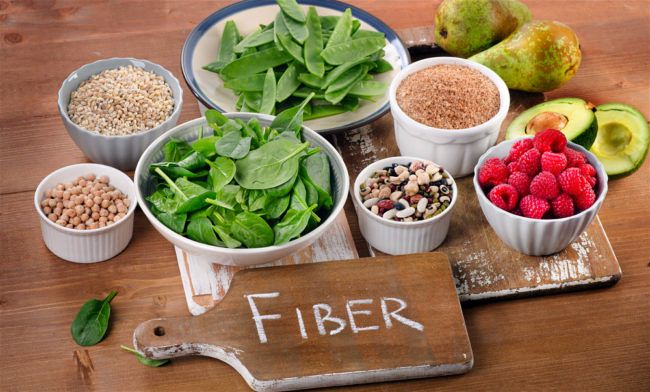Fiber: We know it’s good for us, but it doesn’t really sound appealing. Appealing or not, though, fiber plays a key role in our health.
First things first, what exactly is fiber? Fiber is a type of carbohydrate found in the foods we eat that can’t be broken down by the body. Because of this, fiber passes through the body undigested. This is in contrast with other types of carbohydrates, which are broken down into sugar molecules.
Read on as we answer a few other common questions about fiber.
What does fiber do for the body?
Fiber helps regulate the body’s use of sugar, which in turn keeps hunger at bay and your blood glucose (blood sugar) levels in check. Because fiber isn’t digested by the body, it helps move other foods through your digestive system, keeping you regular and preventing constipation.
It has also been shown to lower a person’s risk of developing many conditions, including heart disease, metabolic syndrome, Type 2 diabetes, diverticulitis and certain types of cancer.
Are there different kinds of fiber?
Fiber comes in two types: soluble and insoluble. Both types are beneficial to your health, though they work in different ways.
Soluble fiber dissolves in water — and has been shown to lower blood sugar and cholesterol levels. This type of fiber is commonly found in fruits and beans.
Insoluble fiber, on the other hand, doesn’t dissolve in water. It helps food move through the body. This type of fiber is found in wheat, whole grains, legumes and some vegetables.
How much fiber do I need?
The Institute of Medicine recommends that adult men eat at least 38 grams of fiber per day, while women should eat at least 25 grams. Most Americans fall far short — the average American adult gets only 15 grams of fiber per day.
Recommended fiber intake for kids varies by age. The American Academy of Pediatrics recommends adding five to your child’s age to determine how much fiber he or she should have per day. So, for example, a 7-year-old should aim for 12 grams of fiber daily.
What foods contain fiber?
Many of the foods we consider “healthy” contain a good amount of fiber. In particular, fruits and vegetables, beans, whole grains, and nuts are excellent sources of fiber.
Looking for the best sources of fiber? The most bang for your buck, so to speak? Turn to:
- green peas (7g/cup)
- chickpeas (2.2g/tablespoon)
- artichokes (7g/medium artichoke)
- barley (16g/half cup)
- bran (14g/cup of oat bran)
- raspberries (8g/cup)
- blackberries (8g/cup)
- prunes (12g/cup of pitted prunes)
What are some easy ways to increase my fiber intake?
Getting enough fiber doesn’t have to be difficult. Eat whole fruits and vegetables instead of juicing them. Choose whole grains instead of refined grain products like white rice and white bread. Select cereals and other products that have been fortified with extra fiber. Add vegetables and beans into your go-to recipes — in many cases, they won’t even change the flavor!
Looking to make a major change in your diet or workout routine? Check in with your doctor first! Find a doctor here.







